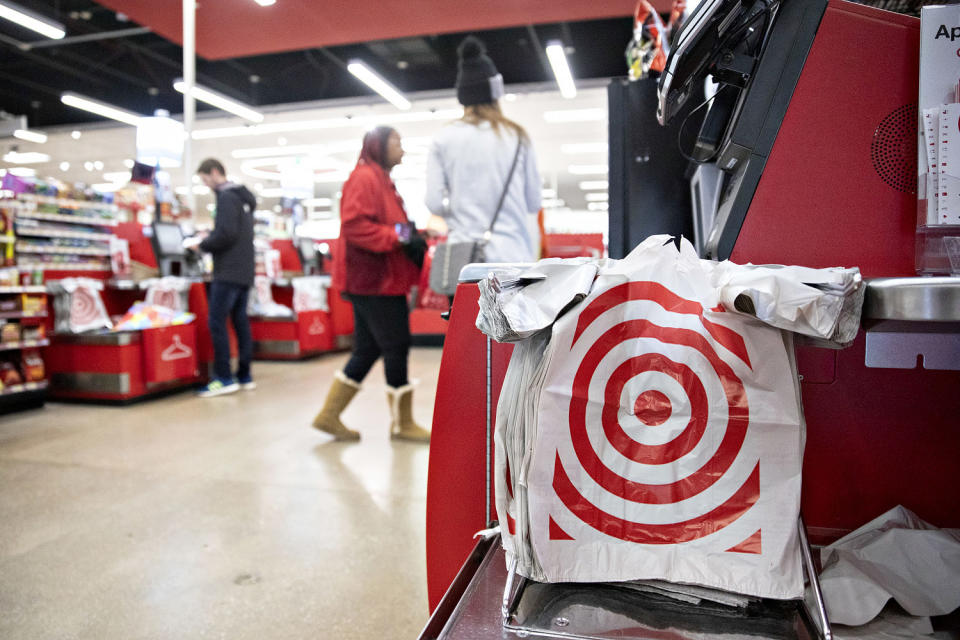Is Walmart's self-checkout changing? Here's what to know
Whether you've got sundries or other essentials to pick up at Walmart, it's possible you may discover that the self-checkout lanes in your local store are closed or open only to Walmart+ members and Spark delivery drivers.
TikTok, Reddit and other social media sites have recently been alight with posts from customers that show the retailer's self-checkout lines cordoned off and cart pushers waiting in line for cashiers to ring them out.
"This is the second time this week that I've gone to Walmart, and this is a different Walmart, and it's been right about this time, and all their self-checkouts are closed and they've started to open up the regular lines again," observed one TikTok user.
In recent years, the giant retailer rolled out self-checkout in many of its brick-and-mortar stores for an experience designed to "help customers complete their shopping even faster," according to Walmart's website.
According to the company, its Walmart+ members also have the additional option to use the company's mobile "Scan & Go" feature, which allows customers to use their phone to scan items as they shop, before paying for their purchased items at a self-checkout lane.
But in the last few months, customers have been reporting changes in available checkout lanes, with one person on Reddit posting a photo of what appeared to be a Walmart sign blocking off the DIY checkout lanes saying, "Attention: This self checkout is for Spark shoppers and Walmart Scan & Go only."
According to Kelsey Bohl, senior manager of corporate communications at Walmart, customers at certain Walmart locations may indeed notice changes to self-checkout lanes.
"From time-to-time, our stores adjust the use of staffed checkouts and self-checkouts. For example, a store might start or end the day with staffed checkouts. As the number of shoppers and associate staffing increases, these stores open self-checkout registers to manage the increased customer flow. This process isn’t new," said Bohl in a statement.
She continued by saying that during times of limited access, some Walmart stores may designate select self-checkout lanes for Walmart+ customers and Spark drivers for faster access and deliveries.
"This decision is intended to better manage checkout availability," she said.
In a subsequent phone call with TODAY.com, Bohl explained that the decision on whether or not to close lanes, or limit the hours they're available, is at the discretion of individual store managers who are responsible for deciding what works best for their employees and customers.
"Store managers have the autonomy to make decisions about what is best for their specific store in their area, for their customers. It’s a very localized decision," Bohl explained, saying that depending on customer traffic and associate staffing, managers make adjustments accordingly.
"Some stores, in some locations, may start the day off and they have associate staff cash registers open only, and as the day goes on, and associate staffing picks up, customer traffic picks up, they’ll open up self-checkout cash registers."
Walmart may not be alone in making changes to its cashier-free kiosks. Target has also been cited among social media users for reducing self-checkout hours.
Posters have taken to Reddit and other platforms like TikTok to express their displeasure over checkout lines at certain bullseye locations, citing too few cashiers ringing out customers and discovering self-checkout lanes closed or operating at reduced hours.
But as far as changes to its self-checkout policy are concerned, a Target spokesperson said that the company currently has no updates to share.

The recent self-checkout issues have led some to speculate that companies are adjusting access to their self-serve stations in response to customers forgetting to scan or pay for their items, as well as a spike in shoplifting.
According to a 2023 report by the National Retail Federation, crime and theft are severely impacting the retail industry, leading to sizable losses, or "shrink."
"Retailers are seeing unprecedented levels of theft coupled with rampant crime in their stores, and the situation is only becoming more dire," David Johnston, vice president of asset protection and retail operations for the NRF, said in the report.
However, according to Bohl, “We recognize theft and shrink are issues within the retail industry, but these decisions are made for a variety of different reasons," including customer foot traffic, shopping patterns and feedback.
Bohl also pointed out that despite the recent stir on social media, adjustments and modifications to self-checkout lanes have been ongoing.
"I want to point out that this is not new, it's not a new operating process. I feel like it stems from Reddit and social posts, and that's why it's bubbling up right now, but it's not a new thing."
This article was originally published on TODAY.com

